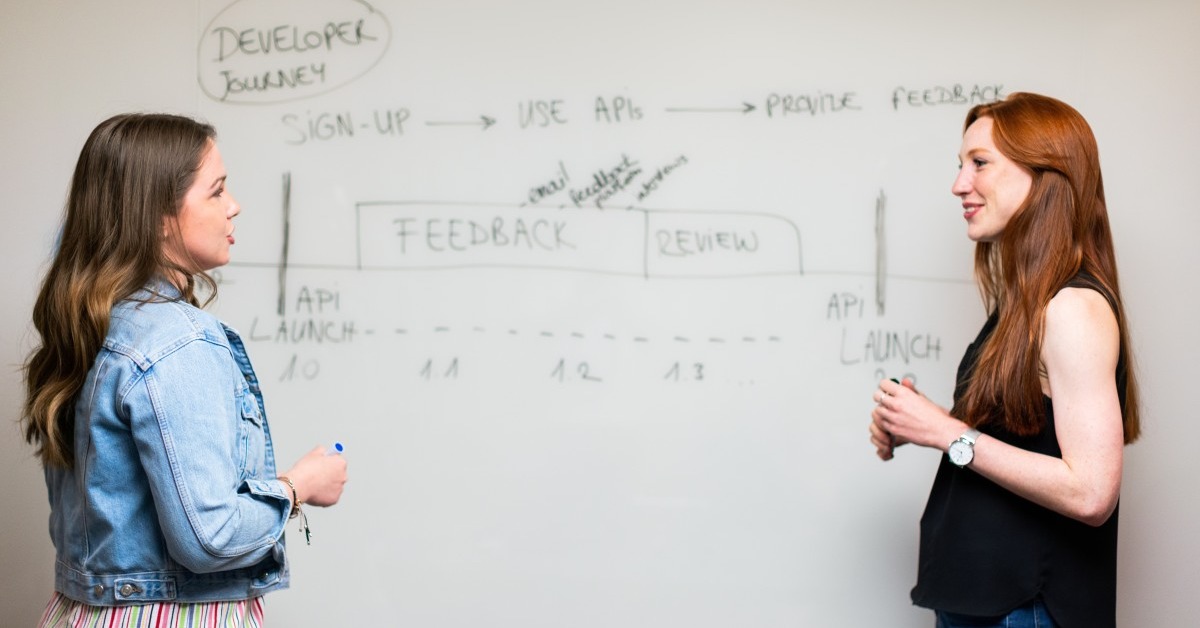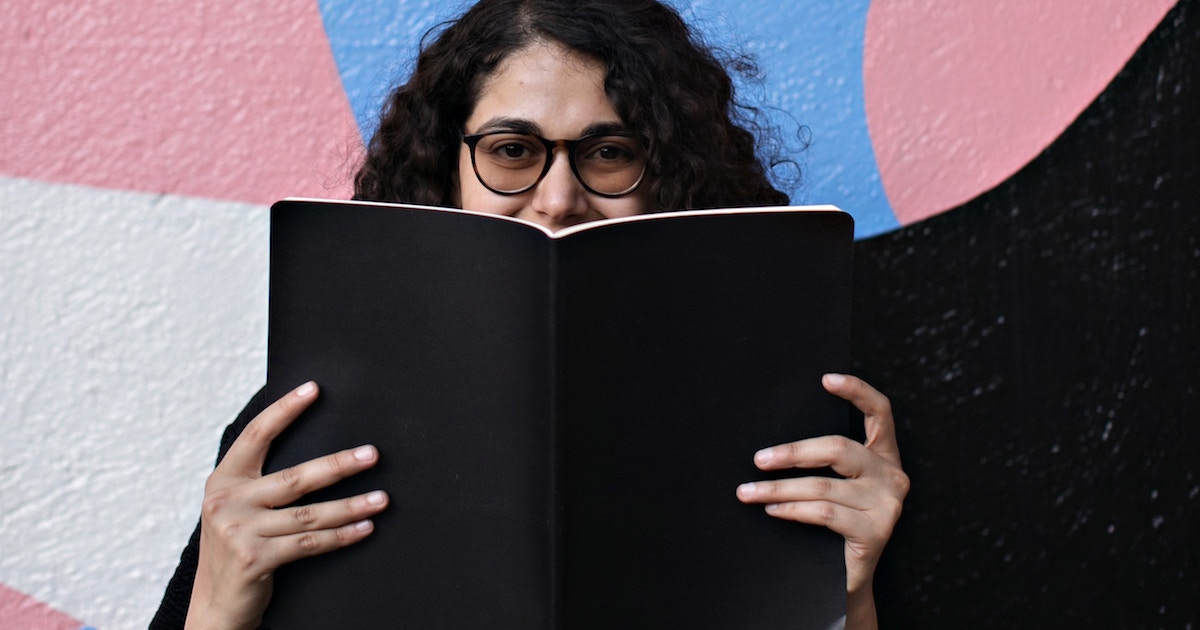
Master's in Elementary Education Salary: How Much More Will You Make?
Getting an MAT or an MEd in Elementary Ed can [...]

“He who can, does. He who cannot, teaches.” So opined George Bernard Shaw in his 1903 work, Maxims for Revolutionists; the aphorism has since become a common—and unfair—indictment of the teaching profession.
Consequently, career-changer first-year teachers are sometimes viewed with curiosity or suspicion—in part because those who do are typically paid more and respected more than those who teach. Why, people wonder, would anyone want to transition out of a career in another field to become a teacher?
As it turns out, there are many reasons people choose teaching as a second career. Teaching may not be an easy job—one report by Gallup found that teachers experience more on-the-job stress than most—but it is a fulfilling one. Gallup found that teachers are happy in their personal and professional lives. They may not drive Lexuses, but they typically feel good about what they do and accomplish for a living.
Unfortunately, there’s not much data out there about second-career teachers. While we know that more than half of teachers enter the field via undergraduate programs and that there are lots of alternative teacher certification avenues, it’s not clear where in their careers enrollees in either type of program are.
We also know that more than a third of today’s educators were in another career before entering the classroom and that people who choose teaching as a second career “enter the profession differently than their colleagues coming directly from undergraduate teacher preparation programs” (as University of New Hampshire (Main Campus) Michael Hildebrandt put it in his doctoral dissertation). If you decide to become a second-career teacher, you’ll bring the benefit of your experience, expertise, and enthusiasm to the classroom. You’ll also bring a unique perspective to your career and share information about your subject area that other teachers don’t have.
Ready to learn more? In this article about teaching as a second career, we cover:
The answer to this question is different for every second-career teacher. “One night, this feeling came over me,” a retired sergeant who served in Afghanistan in the early 2000s told Teacher Education Quarterly. “Inspiration basically said, ‘When you go back, you’re done. This is your last mission. You’re going to be a teacher in the inner city.'”
Don’t worry, however, if you haven’t been visited by your own personal muse. Most people who transition into teaching after working in another field do so for reasons very similar to those who teach from the get-go. Some people choose teaching as a second career because they:
Then there are the second-career teachers who land in education degree programs because they weren’t happy with their professional lives and decided to take a chance on teaching. Sometimes it turns out to be the right choice, as secondary school teacher and Coordinator of Leadership Pathways for Seminole County Public Schools Val Brown discovered. “I wasn’t sure that I wanted to enter the teaching profession even after I realized that my first career as a newspaper journalist was not a good fit for me,” she told Education Week. “It took the veteran teachers in my family—my mother, aunt, and grandmother—to convince me to give education a try. After I was hired for my first teaching position and made it through my first week managing ninth-grade students and a yearbook staff, I had fallen in love with the profession and knew that I had made the right decision.”
| University and Program Name | Learn More |
|
New York University:
Master of Arts in Teaching
|
|
|
Merrimack College:
Master of Education in Teacher Education
|
Whether transitioning into teaching from another career is easier than becoming a teacher after going to college depends on many factors, including how much education you have, what you want to teach, and where you’d like to teach.
Many people assume that becoming a teacher involves getting a bachelor’s degree in either education or your area of interest and then a Master of Arts in Teaching (MAT) or Master of Education (MEd). There are undoubtedly some career switchers who enter the teaching profession in this roundabout way. However, it’s probably more common for second-career teachers to have undergraduate degrees and even master’s degrees in disciplines unrelated to education. As long as you have a degree in any discipline, you won’t be starting from scratch.
If you have a degree in the subject you’d like to teach, you may be able to get your initial teaching certificate after completing a one- or two-year teacher preparation program that meets the requirements of your state. If you don’t have a degree related to the subject you want to teach—e.g., you majored in finance but want to become an elementary school teacher—you may be able to enroll in a one- or two-year master’s in teaching or master’s in education program with a concentration related to your teaching goals. As long as you choose a program designed to lead to licensure, you’ll be able to get the credentials you need to work in the public school system.
Keep in mind that each state makes its own rules concerning the qualifications teachers must meet and the exams they must pass before to qualify for licensure. In some states, a bachelor’s degree in any subject, a certificate from a teacher preparation program, student teaching hours, and a passing grade on the PRAXIS exams are all it takes. In others, aspiring teachers have to pass state exams to qualify for an initial teaching license and get an MAT or MEd if they want to renew that license. You can contact your state’s Department of Education to determine what requirements teachers must meet to be eligible for licensure.
To address teacher shortages, most states have at least one state-sponsored alternative certification program designed to get teachers into underserved public schools and school districts as quickly as possible. Candidates accepted to these alternative programs (sometimes also called emergency, nontraditional, or temporary certification programs) often teach full-time (and receive a full-time teacher’s salary and benefits) while pursuing the education necessary to get certified.
It’s an attractive option when your goal is to transition into teaching as quickly as possible, but be aware that it isn’t easy. Applicants must pass rigorous screenings, demonstrate their mastery of subject content (sometimes via exams), and meet high standards throughout the program. This can be especially challenging, given that they have no teaching experience or classroom management experience and are often placed in underfunded or underperforming districts.
There are also fast-track teacher certification programs administered by colleges and universities, non-profit organizations, and private companies. Teach for America, for example, offers a two-year alternative route to certification that puts aspiring teachers across the US into classrooms in low-income and underserved areas.
The fastest way to become a teacher, however, is to teach in a private, parochial, charter, or foreign-based international school. If you are a subject expert in mathematics, science, or another in-demand discipline, you might find a teaching position in these types of schools without a degree in education or a teaching license. Unlike public schools, private schools can legally set their own criteria when it comes to teacher standards.
The average teacher salary may represent a raise or a demotion depending on what you were doing before, but very few teachers choose this career for the money. Across the US, kindergarten and elementary school teachers earn about $59,000, middle school teachers earn about $60,000, and high school teachers earn about $62,000. That’s not big money, though how much you earn depends on numerous factors, including location, experience, and education level.
Teachers with master’s degrees do earn more. About 88 percent of large districts base teacher salaries on education level. A teacher with a Master of Arts in Teaching or a Master of Education may earn $10,000 more than their colleagues without advanced degrees.
As you work your budget, keep in mind that the average teacher spends almost $500 of their own money on supplies each year—and some spend thousands. Teachers work at least 50 hours per week, including more than 400 hours of overtime each school year that’s essentially unpaid. And those summers off that make teaching jobs seem so appealing are a myth. Lots of teachers work at second jobs over the summer. Some work at those second jobs all year-round.
As one Reddit commenter put it in a thread about second-career teachers, “Having summers off is amazing. But only if your school pays enough for you not to take on a second job. Most areas don’t pay well, especially for uncertified teachers. I did the math, and I work more hours as a teacher, with holidays off and summers off, than I worked at a full-time job working overtime.”
Transitioning into teaching can change your life for the better, but that doesn’t mean there aren’t downsides to becoming a second-career teacher. Before making the leap into education, consider the upsides and the downsides.
Before you commit to becoming a second-career teacher, spend some time in learning environments with students in the grades you think you’d like to teach. IIf you’re unsure whether you want to teach in a K-5 classroom, a middle grades classroom, or a high school classroom, look for opportunities to get some first-hand experience in each of those environments or work with students in those grade levels. You can do this by:
In other words, your leap into teaching doesn’t have to be a leap of faith. Some people, like the sergeant quoted above, wake up one morning knowing that they’re destined to be in a classroom. Most people, however, take a little longer to transition into teaching, and that’s okay. Students can always tell when a teacher doesn’t enjoy what they’re doing, and they act (or act out) accordingly. Before you enroll in a teacher-preparation or master’s in teaching program, it’s best to be sure teaching is for you.
This article was originally published in 2018. It has been updated to reflect the most recent data on the subject.
Questions or feedback? Email editor@noodle.com

Getting an MAT or an MEd in Elementary Ed can [...]

Do music teachers make more than their fellow educators? Not [...]

Some kindergarten teachers earn $98,000 a year. That likely won't [...]

Though most schools and educators are excited about returning to [...]

If you're looking to quickly (and inexpensively) earn your MAT [...]
Categorized as: Teaching, Education & Teaching